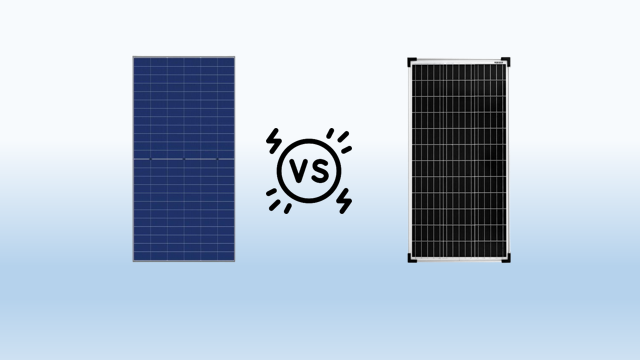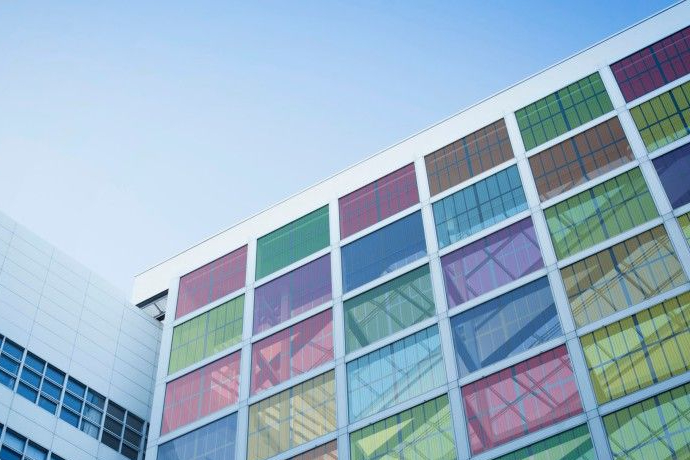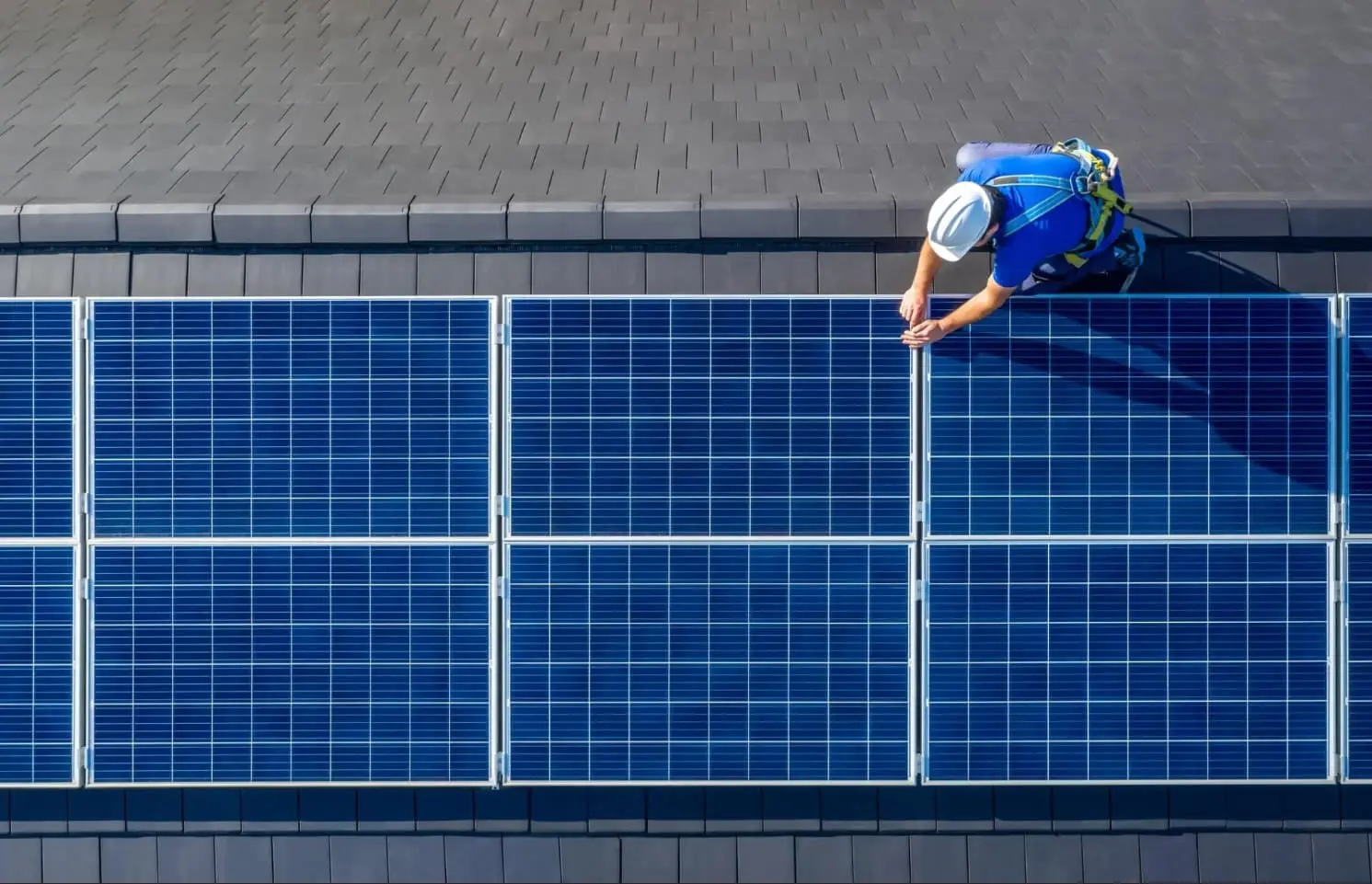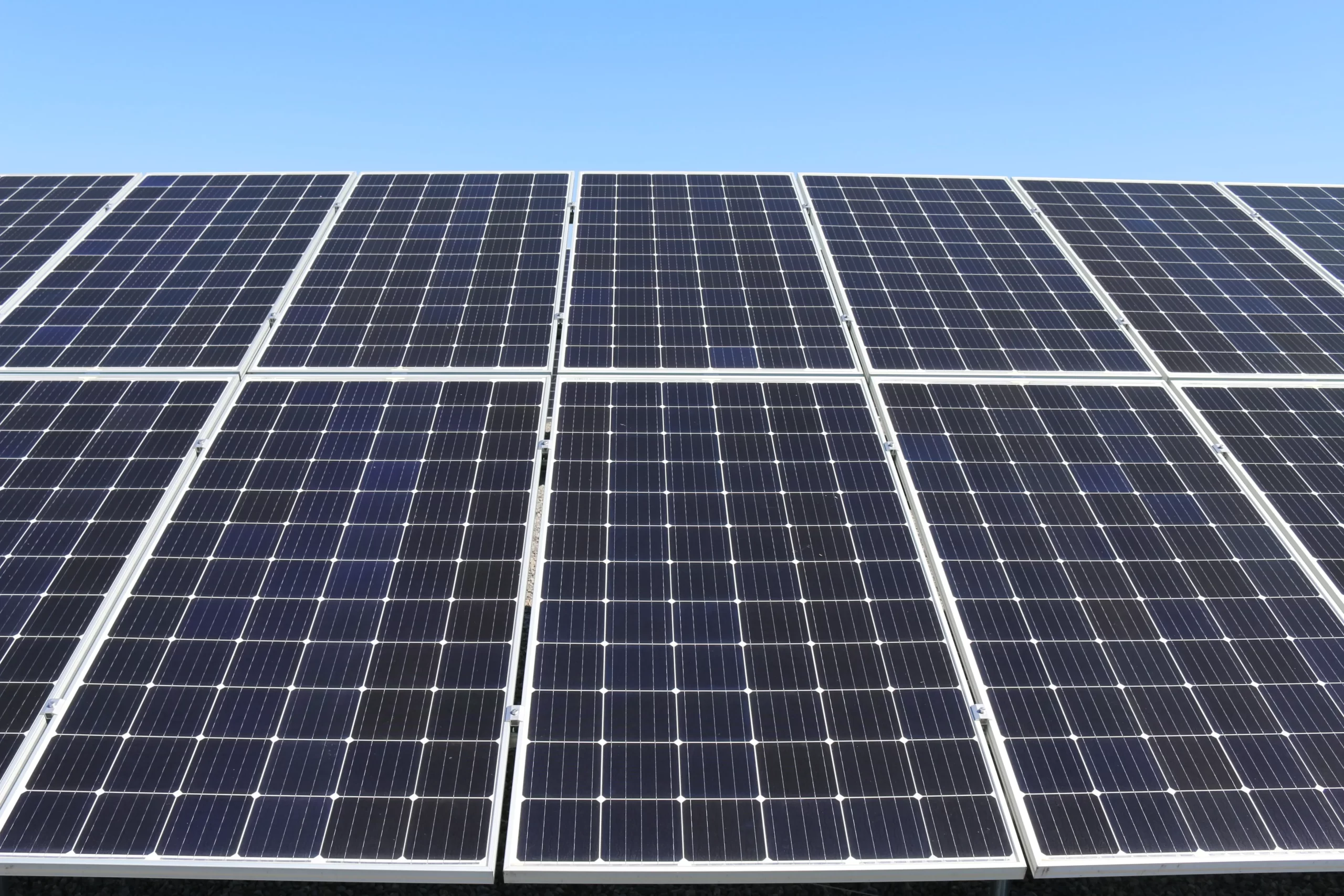With the rapid development of solar energy, solar panels are becoming much more common in daily life. When buying solar panels, color is an important factor. Blue and black are common colors for solar panels. Which color is better: blue or black?
This is the definitive guide to blue vs black solar panels.
So if you are searching for:
- Why are solar panels different in color?
- Pros and cons of blue vs black solar panels
- Blue or black: which is better?
- Cost of blue vs black solar panels
Let’s explore the reasons behind the different colors of solar panels!
Why are solar panels different colors?
Solar panels come in various colors, mainly due to the different PV materials used and manufacturing processes. The color of the solar material depends on the light it can absorb and reflect. This, in turn, affects the solar cell’s ability to absorb and convert light.
Blue solar panels, consisting of blue or gray silicon crystal cells. The phosphide film on the wafer reduces reflection and helps absorb light better, making it more effective. The phosphide film is less reflective of blue light, so the solar panel looks blue.
Black solar panels that use amorphous silicon materials or amorphous materials usually appear black or gray. These materials absorb more light, making the solar panels look black. PERC solar panels also look black for process and cosmetic reasons.
Colored solar panels have a special coating that helps them resist water, corrosion, UV rays, and dust, and reduces surface reflectivity. Sungold can customize different colors and patterns according to the customer’s needs.
Pros and cons of blue vs black solar panels
The main difference between blue and black solar panels is their silicon type. Blue solar
panels are made of polycrystalline silicon, while black solar panels are made of monocrystalline silicon solar cells.
Some of the pros and cons of blue solar panels are:
Pros:
-They are more cost-effective than black solar panels, meaning they have a lower upfront cost and a shorter payback period.
-They produce things in an environmentally friendly manner. This is achieved by using less energy, generating less waste, and emitting fewer greenhouse gases.
Cons:
– They have a lower efficiency than black solar panels, meaning they generate less electricity per unit of surface area.
-They require a larger installation area to produce the same amount of electricity as black solar panels, which may be a problem if you have limited roof space or want to maximize your aesthetic appeal
Some of the pros and cons of black solar panels are:
Pros:
-They have a higher efficiency than blue solar panels, meaning they can generate more electricity per unit of surface area
-They have a sleek and uniform appearance, which may suit your taste or enhance the value of your property
Cons:
-They are more expensive than blue solar panels, meaning they have a higher upfront cost and a longer payback period.
-They have a more energy-intensive and wasteful manufacturing process, as they require more silicon and produce more silicon waste.
Blue vs black solar panel, which is better?
The ideal solar panel depends on your preferences, budget, and installation location. To make a well-informed choice, consider the advantages and disadvantages of blue and black solar panels mentioned earlier. By considering these factors, you can make a well-informed choice.
Cost: Blue solar panels are cheaper upfront and have a quicker payback period, making them a more affordable choice. However, if you are willing to invest more money for a higher return, black solar panels may be better for you, as they can generate more electricity and save you more money in the long run.
Efficiency: If you want to maximize the amount of electricity you can produce from your solar panels, black solar panels may be better for you, as they have a higher efficiency and can perform better in low-light conditions. Blue solar panels can produce enough electricity for you if you have enough roof space and sunlight. However, they may not be the best option.
Appearance: If you want your solar panels to look nice, black ones are a good choice. They have a smooth and consistent appearance that can match your roof. However, if you do not mind the color or the visible grid lines of your solar panels, blue solar panels may be fine for you, as they have a more colorful and varied look.
Ultimately, the choice is yours. You can weigh the pros and cons of each type of solar panel and decide which one suits your situation and preferences better.
The cost of blue vs black solar panels
The price of blue and black solar panels changes based on the silicon type, manufacturing method, and efficiency. Blue solar panels are cheaper and pay for themselves faster compared to black solar panels. Black solar panels produce more electricity per surface area, saving you money in the long term.
Blue solar panels would cost between $0.90 to $1 per watt,
while black solar panels would cost between $1 to $1.50 per watt.
However, these prices may vary depending on the brand, quality, and installation of the solar panels. Therefore, it is advisable to compare different quotes from different solar panel providers before making a decision.
Final Recommendation
If you want to learn more about blue solar panels and colored solar panels, you can read our previous article:
Exploring the Reasons Behind the Blue Color of Some PV Cells
How Much Do You Know About Colored Solar Panels?
Sungold, a solar panel maker, offers customizable options for colors and patterns. Whether you want black, blue, or colored panels, we can provide you with what you need. Contact us for more information.















